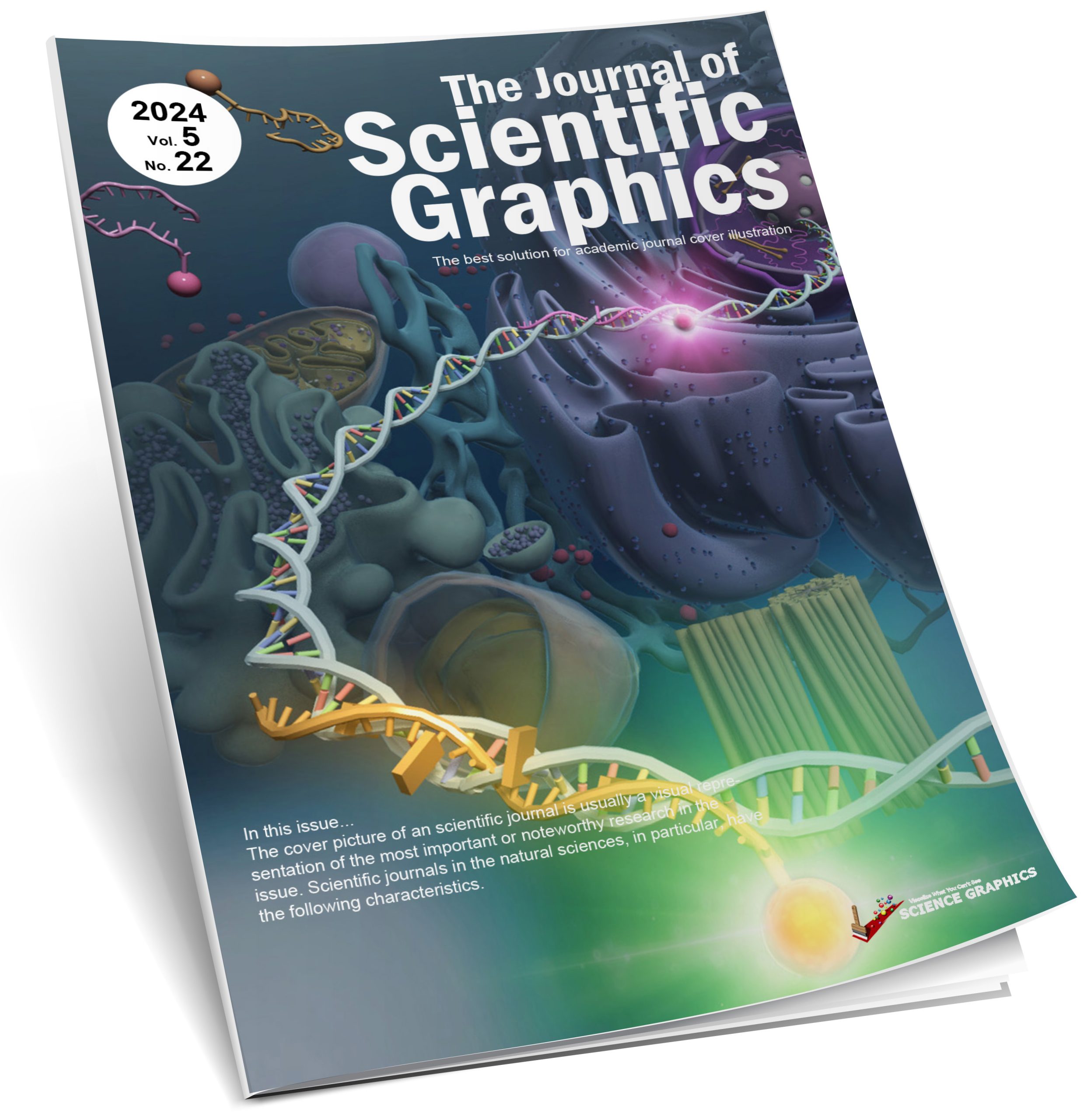What is a cover picture?
What is a cover picture? What is common process? Why publishers emphasize cover pictures?
What is a Scientific Journal Cover Picture?
The cover picture of an scientific journal is usually a visual representation of the most important or noteworthy research in the issue. Scientific journals in the natural sciences, in particular, have the following characteristics.
- Highlight the focus of the research
The cover picture symbolically represents the focus of the research or major finding selected from among the articles published in the issue. For example, a new molecular discovery, an important experimental result, or an innovative theory may be visually depicted. - High-quality visuals
Cover pictures are often produced using advanced graphic design and professional illustration techniques. The design must combine scientific accuracy with aesthetic appeal. - Communicating Information
Cover pictures are designed to convey scientific information in a concise and effective manner. It is important to present information in a form that is easily understood by experts in other fields and the general reader. - Diverse Representation
The natural sciences cover a wide range of fields, and accordingly, cover pictures are presented in a variety of themes and styles, including biology, chemistry, physics, and earth sciences. On this website, you can browse adopted cases by journal. For example, compare the following fields
Biology: ACS Chemical Biology
Chemistry: ACS Catalysis
Theoretical physical chemistry:The Journal of Physical Chemistry A

With these features, the cover picture of a scientific journal serves as more than mere decoration; it symbolizes the journal’s scholarly value and creativity.
What is the common process for creating and submitting a cover picture?
The general flow of creating and submitting a cover picture for an scientific journal is as follows:
- Selection of studiesPublisherResearcher
First, the researcher selects the research to be depicted in the cover picture. This is often an important or interesting study selected from among the papers to be published in the issue. Once selected, the publisher sends an invitation to the researcher and the researcher accepts to begin the cover picture creation process. - ConceptualizationResearcherDesigner
Based on the selected research, the researcher comes up with a concept that will be visually represented. During this consideration, the researcher may consult with a designer such as Science Graphics Co., Ltd. - Design CreationDesigner
Once the concept is determined, the actual design is created. This may require graphic design skills and the use of specific software. The design must be both scientifically accurate and visually appealing. - Internal ReviewResearcherDesigner
Once the design is complete, it is reviewed within the research team. At this stage, the scientific accuracy and appropriateness of the design will be reviewed and revisions will be made if necessary. This process is described in more detail on the Workflow page. - Researcher Submitting to Journal Researcher
Once the final version is completed after the internal review, it is submitted to the journal. Submission methods vary from journal to journal, so it is important to follow their guidelines and instructions. - Journal ReviewPublisherResearcherDesigner
Submitted designs are reviewed by the journal’s editors and design team. Additional revisions and improvements may be required at this stage. In addition, the necessary paperwork will be completed to ensure that the copyright of the cover picture is ultimately transferred from the designer/researcher to the publisher. - Publisher decides to publishPublisher
Once reviewed and approved, the design will be published as the final cover picture. You will be notified by the journal if it is accepted for publication.
This process may vary by journal and research field, but generally follows the steps outlined above. The key is to represent your research accurately and creatively, and to follow the journal’s guidelines. Other copyright transfer and cover adoption tips can be found on the FAQ page.
What is the background that the growing number of publishers emphasize cover pictures?
Several considerations on the reason that more and more scientific journals are emphasizing cover pictures these days.
- Branding and differentiation
An attractive cover picture can help strengthen a journal’s brand image and differentiate it from many other journals. Having a unique visual identity can enhance the journal’s visibility and reputation. For example, publishers Wiley and Cell Press have different preferred designs. - Attract the reader’s attention
An eye-catching cover picture can attract readers’ attention and arouse their interest in the journal. It can appeal to a wider audience by visually appealing to complex scientific content, especially to non-specialists and general readers. - Compatibility with Social Media
In today’s world where social media plays an important role in the spread of information, visually appealing content is more likely to get more sharing and engagement. Coverpictures can enhance a journal’s online presence and be used as part of digital marketing. - Enhanced Competitiveness
The field of academic publishing is highly competitive, and journals must constantly find new ways to present themselves to the market. The use of cover pictures is one way for journals to stand out in such a competitive environment.
For these reasons, scientific journal publishers are devoting more attention and resources to cover pictures. The cover picture has become an important tool for increasing a journal’s visibility and appeal to a broad audience.
